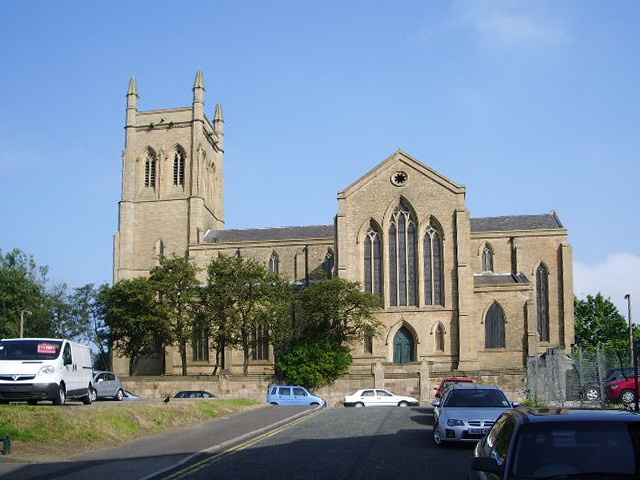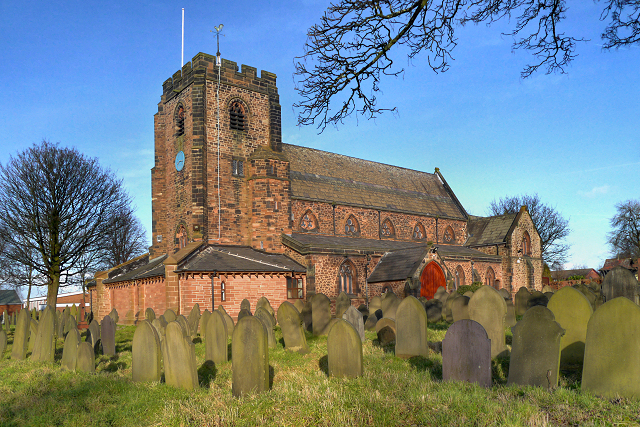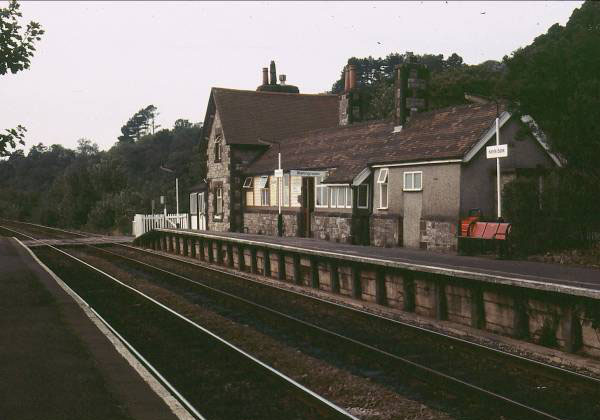|
Lists Of Works By Sharpe, Paley And Austin
Edmund Sharpe, Edward Paley, Hubert Austin, Henry Paley and Geoffrey Austin were architects who worked alone or in different partnerships in a practice in Lancaster, Lancashire, England, for two periods in the late 19th and early 20th centuries. For lists of their works at different phases of the practice see: *List of architectural works by Edmund Sharpe *List of works by Sharpe and Paley *List of ecclesiastical works by E. G. Paley * List of non-ecclesiastical works by E. G. Paley *List of ecclesiastical works by Paley and Austin *List of non-ecclesiastical works by Paley and Austin *List of works by Paley, Austin and Paley * List of ecclesiastical works by Austin and Paley (1895–1916) *List of non-ecclesiastical works by Austin and Paley (1895–1914) *List of ecclesiastical works by Austin and Paley (1916–44) A ''list'' is any set of items in a row. List or lists may also refer to: People * List (surname) Organizations * List College, an undergraduat ... [...More Info...] [...Related Items...] OR: [Wikipedia] [Google] [Baidu] |
Edmund Sharpe
Edmund Sharpe (31 October 1809 – 8 May 1877) was an English architect, architectural historian, railway engineer, and sanitary reformer. Born in Knutsford, Cheshire, he was educated first by his parents and then at schools locally and in Runcorn, Greenwich and Sedbergh. Following his graduation from Cambridge University he was awarded a travelling scholarship, enabling him to study architecture in Germany and southern France. In 1835 he established an architectural practice in Lancaster, initially working on his own. In 1845 he entered into partnership with Edward Paley, one of his pupils. Sharpe's main focus was on churches, and he was a pioneer in the use of terracotta as a structural material in church building, designing what were known as "pot" churches, the first of which was St Stephen and All Martyrs' Church, Lever Bridge. He also designed secular buildings, including residential buildings and schools, and worked on the development of railways in north-west ... [...More Info...] [...Related Items...] OR: [Wikipedia] [Google] [Baidu] |
Edward Graham Paley
Edward Graham Paley, usually known as E. G. Paley (3 September 1823 – 23 January 1895), was an English architect who practised in Lancaster, Lancashire, in the second half of the 19th century. After leaving school in 1838, he went to Lancaster to become a pupil of Edmund Sharpe, and in 1845 he joined Sharpe as a partner. Sharpe retired from the practice in 1851, leaving Paley as the sole principal. In 1868 Hubert Austin joined him as a partner, and in 1886 Paley's son Henry (who was usually known as Harry) also became a partner. This partnership continued until Edward Paley's death in 1895. Paley's major work was the design of new churches, but he also rebuilt, restored, and made additions and alterations to existing churches. His major new ecclesiastical design was that of St Peter's Church, Lancaster, which became Lancaster Cathedral. He also carried out secular commissions, mainly on country houses in the north-west of England. His largest and most important sec ... [...More Info...] [...Related Items...] OR: [Wikipedia] [Google] [Baidu] |
Hubert Austin
Hubert James Austin (31 March 1841 – 1915) was an English architect who practised in Lancaster. With his partners he designed many churches and other buildings, mainly in the northwest of England. Early life and career Hubert James Austin was the youngest son of the Revd Thomas Austin, later the rector of Redmarshall, County Durham. He attended Richmond Grammar School, and in 1860 was articled to his older brother, Thomas, an architect in Newcastle upon Tyne. He then worked with Sir George Gilbert Scott in London before coming to Lancaster in 1868 as the partner of E. G. Paley, the title of the practice becoming Paley and Austin. In 1886 Paley's son Henry Paley became a partner in the practice and its title changed to Paley, Austin and Paley. E. G. Paley died in 1895 and Austin continued in partnership with his son, the practice becoming Austin and Paley. In 1914 Austin's son Geoffrey joined the practice as a partner and, for a short time, it was entitle ... [...More Info...] [...Related Items...] OR: [Wikipedia] [Google] [Baidu] |
Henry Paley
Henry Anderson Paley (1859–1946) (usually known as Harry Paley) was an English architect. Training and career He was the fifth and last child of the Lancaster architect Edward Paley. He was educated at Castle Howard School in Lancaster, then from 1873 at Uppingham School. After leaving school in 1877, he was articled to his father's firm, Paley and Austin. In 1881 he went on to the London office of T. E. Collcutt for 18 months to broaden his experience. He returned to his father's practice in 1882 and became a partner in 1886, the firm then being known as Paley, Austin and Paley. Up to the death of Hubert Austin in 1915, he was involved in the design of 75 new churches and also in restorations and additions to other churches. After that he mainly worked alone, or with associates rather than partners, designing some more churches, and also hospitals, schools and houses. Personal life Paley married Katherine Margaret Gossalin in 1888. Initially they lived at Dallas ... [...More Info...] [...Related Items...] OR: [Wikipedia] [Google] [Baidu] |
Lancaster, Lancashire
Lancaster (, ) is a city and the county town of Lancashire, England, standing on the River Lune. Its population of 52,234 compares with one of 138,375 in the wider City of Lancaster local government district. The House of Lancaster was a branch of the English royal family. The Duchy of Lancaster still holds large estates on behalf of Charles III, who is also Duke of Lancaster. Its long history is marked by Lancaster Castle, Lancaster Priory Church, Lancaster Cathedral and the Ashton Memorial. It is the seat of Lancaster University and has a campus of the University of Cumbria. The Port of Lancaster played a big role in the city's growth, but for many years the outport of Glasson Dock has become the main shipping facility. History The name of the city first appeared in the Domesday Book of 1086, as ''Loncastre'', where "Lon" refers to the River Lune and "castre" (from the Old English ''cæster'' and Latin ''castrum'' for "fort") to the Roman fort that stood on the site. Ro ... [...More Info...] [...Related Items...] OR: [Wikipedia] [Google] [Baidu] |
List Of Architectural Works By Edmund Sharpe
Edmund Sharpe (1809–1877) was an English architect, architectural historian, railway engineer, and sanitary reformer. Between 1832 and 1835, in receipt of a travelling fellowship, he studied architecture in Germany and southern France. He started his career as an architect in Lancashire in 1835, initially on his own, then from 1845 in partnership with Edward Paley. He mainly designed churches but also some secular buildings, including domestic properties and schools. Sharpe pioneered the use of terracotta as a structural material in church construction, designing what were known as "pot" churches. During this time he also worked on the development of railways in Northwest England, including the design of bridges and the planning of new lines. In 1851, he resigned from his architectural practice, and in 1856 he moved from Lancaster and spent the rest of his career mainly as a railway engineer, first in North Wales, then in Switzerland and southern France. He returned to England ... [...More Info...] [...Related Items...] OR: [Wikipedia] [Google] [Baidu] |
List Of Works By Sharpe And Paley
Sharpe and Paley was a partnership of two architects who practised from an office in Lancaster, Lancashire, England, between 1845 and 1856. Founded by Edmund Sharpe in 1835, the practice flourished for more than a century, until 1946. It had grown to become the largest in northwest England by the late 19th century and was responsible for the design of many important buildings, especially churches. In 1838 Sharpe took as his pupil the 15-year-old Edward Graham Paley, usually known as . The two formed a partnership in 1845, following which Sharpe took an increasing interest in activities outside the practice. By 1847 Paley was responsible for most of the firm's work, and was carrying out commissions independently from at least 1849. Sharpe formally withdrew from the practice in 1851, although it continued to trade as Sharpe and Paley until 1856. During Sharpe's time as sole principal the practice was involved mainly with ecclesiastical work, although it also undertook commis ... [...More Info...] [...Related Items...] OR: [Wikipedia] [Google] [Baidu] |
List Of Ecclesiastical Works By E
A ''list'' is any set of items in a row. List or lists may also refer to: People * List (surname) Organizations * List College, an undergraduate division of the Jewish Theological Seminary of America * SC Germania List, German rugby union club Other uses * Angle of list, the leaning to either port or starboard of a ship * List (information), an ordered collection of pieces of information ** List (abstract data type), a method to organize data in computer science * List on Sylt, previously called List, the northernmost village in Germany, on the island of Sylt * ''List'', an alternative term for ''roll'' in flight dynamics * To ''list'' a building, etc., in the UK it means to designate it a listed building that may not be altered without permission * Lists (jousting), the barriers used to designate the tournament area where medieval knights jousted * ''The Book of Lists'', an American series of books with unusual lists See also * The List (other) * Listing (di ... [...More Info...] [...Related Items...] OR: [Wikipedia] [Google] [Baidu] |
List Of Non-ecclesiastical Works By E
A ''list'' is any set of items in a row. List or lists may also refer to: People * List (surname) Organizations * List College, an undergraduate division of the Jewish Theological Seminary of America * SC Germania List, German rugby union club Other uses * Angle of list, the leaning to either port or starboard of a ship * List (information), an ordered collection of pieces of information ** List (abstract data type), a method to organize data in computer science * List on Sylt, previously called List, the northernmost village in Germany, on the island of Sylt * ''List'', an alternative term for ''roll'' in flight dynamics * To ''list'' a building, etc., in the UK it means to designate it a listed building that may not be altered without permission * Lists (jousting), the barriers used to designate the tournament area where medieval knights jousted * ''The Book of Lists'', an American series of books with unusual lists See also * The List (other) * Listing ( ... [...More Info...] [...Related Items...] OR: [Wikipedia] [Google] [Baidu] |
List Of Ecclesiastical Works By Paley And Austin
Paley and Austin was the title of a practice of architects in Lancaster, Lancashire, Lancaster, Lancashire, England, in the 19th century. The practice had been founded in 1836 by Edmund Sharpe. The architects during the period covered by this list are Edward Graham Paley, E. G. Paley and Hubert Austin. E. G. Paley had joined Edmund Sharpe in partnership in 1845. This partnership continued until 1851, when Sharpe retired, and Paley ran the business as a single principal until he was joined by Hubert Austin in 1868. The partnership of Paley and Austin continued until they were joined as a partner by Paley's son, Henry Paley, in 1886. This list covers the church (building), ecclesiastical works executed by the practice during the partnership of E. G. Paley and Hubert Austin. These works include new churches, restorations and alterations of older churches, additions to churches, and church fittings and furniture. The practice designed over 40& ... [...More Info...] [...Related Items...] OR: [Wikipedia] [Google] [Baidu] |
List Of Non-ecclesiastical Works By Paley And Austin
Paley and Austin were the surnames of two architects working from a practice in Lancaster, Lancashire, England, between 1868 and 1886. The practice had been founded in 1836 by Edmund Sharpe. The architects during the period covered by this list are E. G. Paley and Hubert Austin. E. G. Paley had joined Edmund Sharpe in partnership in 1845. This partnership continued until 1851, when Sharpe retired, and Paley ran the business as a single principal until he was joined by Hubert Austin in 1868. The partnership of Paley and Austin continued until they were joined as a partner by Paley's son, Henry Paley, in 1886. This list covers the non-ecclesiastical works executed by the practice during the partnership of Paley and Austin; the period from 1868 to 1886. These include new houses and alterations to houses (which varied in size from large country mansions to tenement blocks), railway stations, schools and alterations to schools, banks, industrial buildings, hospitals, ... [...More Info...] [...Related Items...] OR: [Wikipedia] [Google] [Baidu] |
List Of Works By Paley, Austin And Paley
Paley, Austin and Paley was the title of a practice of architects in Lancaster, Lancashire in the 19th century. The practice had been founded in 1836 by Edmund Sharpe. The architects during the period covered by this list are E. G. Paley, Hubert Austin and E. G. Paley's son Henry Paley. Henry Paley became a partner in 1886 and this partnership continued until the death of E. G. Paley in 1895. This list covers the works executed by the practice during the partnership of Paley, Austin and Paley. Because of the location of the practice, most of their ecclesiastical work was in the areas that are now Cumbria, Lancashire, and Greater Manchester, but examples can also be found in Cheshire, Merseyside, Yorkshire, Worcestershire and the West Midlands. Key Works References Citations Sources * * * * * * * * {{DEFAULTSORT:Paley, Austin And Paley Gothic Revival architecture Paley, Austin and Paley Sharpe, Paley and Austin are th ... [...More Info...] [...Related Items...] OR: [Wikipedia] [Google] [Baidu] |







